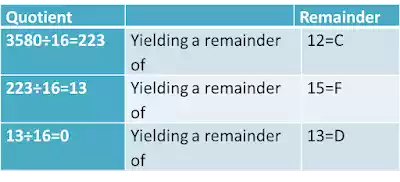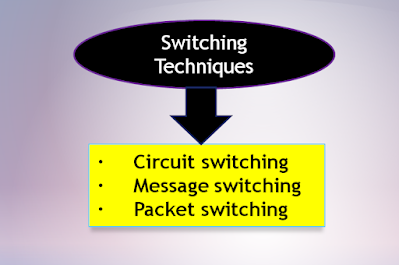Number System (Binary,Decimal,Octal,Hexa-Decimal): Definition, Types, Conversion & Examples Part-2
Hexadecimal Number System: Definition, Types, Conversion & Examples
 |
| Hexadecimal Number System |
Hexadecimal Number System: Definition
Decimal | Hexadecimal | Binary |
0 | 0 | 0000 |
1 | 1 | 0001 |
2 | 2 | 0010 |
3 | 3 | 0011 |
4 | 4 | 0100 |
5 | 5 | 0101 |
6 | 6 | 0110 |
7 | 7 | 0111 |
8 | 8 | 1000 |
9 | 9 | 1001 |
10 | A | 1010 |
11 | B | 1011 |
12 | C | 1100 |
13 | D | 1101 |
14 | E | 1110 |
15 | F | 1111 |
Hexadecimal Number System: Conversions
1. Hexadecimal to Binary:
Convert each hexadecimal number to its 4-bit binary number. Refer to the table to find the equivalent binary number. The same procedure for the fractional part was also followed.
Example- A3FE.2E16 = ( )2
Solution:
A 3 F E . 2 E
010 0011 1111 1110 . 0010 1110
The equivalent binary number is (1010001111111110.00101110)2.
2. Binary to Hexadecimal:
To convert a binary number to hexadecimal, make 4-bit binary groups towards the left and right sides of the binary point.
Add binary digit 0 at each point to complete the 4-bit binary group; if necessary, after forming the groups, replace each group of 4-bit binary numbers with its hexadecimal equivalent (as shown in the table mentioned above).
Example: (0011.1100)2 = ( )16.
Solution: 0011 . 1100
Hexadecimal digit: 3 . C
Hexadecimal equivalent is (3.C)16.
3. Hexadecimal to Decimal:
Multiply each hexadecimal digit by its positional value and add resultant values of all the digits.
Example- (CF3D.241)16 = ( )10.
Solution:
Digit: C F 3 D . 2 4 1
Value: C*163+F*162+3*161+D*160+2*16-1+4*16-2 +1*16-3 =12*163+15*162+48+13*160+0.124+0.0156+0.0002
=49152+3840+48+16+0.124+0.0156+0.0002
=53053.139810
Equivalent decimal number is (53053.1398)10.
4. Decimal to Hexadecimal:
To convert the integer part of the number, use the method of successive division by 16 until the remainder becomes 0(zero). The obtained result is then read in reverse order to obtain the hexadecimal equivalent of a decimal number.
For conversion of the fractional part of the decimal number, use the method of successive multiplication by 16. The Carry so obtained is read in the forward order to obtain the hexadecimal equivalent of a decimal number.
Example: (3580.25)10 = ( )16?
Solution:
For Integer Part
 |
| Decimal to Hexadecimal |
For fractional Part:
Product | Carry | |
0.25*16=4.00 | And a carry of | 4 |
Hexadecimal fraction is 4.
If greater accuracy is desired, the process of successive multiplication can be continued further.
The hexadecimal equivalent is (DFC.4)16.
5. Octal to Hexadecimal:
First, convert octal number to decimal number and then convert decimal number to octal number.
Example: (32.2)8 = ( )16?
Octal digit: 3 2 . 2
Decimal: 3*81+2*80+2*8-1
= 24+2+2*0.125
=26+0.250
= (26.25)10.
Decimal to Hexadecimal:
For Integer Part:
Quotient | Remainder | |
26÷16=1 | Yielding a remainder of | 1 |
1÷16=0 | Yielding a remainder of | 0 |
For fractional Part:
Product | Carry | |
0.25*16=4.00 | And a carry of | 4 |
Hence Hexadecimal equivalent is (1A.4)16.
6. Hexadecimal to Octal:
First, convert Hexadecimal number to decimal number and then convert decimal number to octal.
Example: (29.4)16 = ( )8?
Hexadecimal digit: 2 9 . 4
Decimal: 2*161+9*160+4*16-1
=32+9+4*0.062
=41+0.248
= (41.248)10.
Decimal to octal:
For Integer Part:
Quotient | Remainder | |
41÷8=5 | Yielding a remainder of | 1 |
5÷8=0 | Yielding a remainder of | 5 |
For fractional Part:
Product | Carry | |
0.248*8=1.984 | And a carry of | 1 |
0.984*8=7.872 | And a carry of | 7 |
0.872*8=6.976 | And a carry of | 6 |
Hence octal equivalent is (51.176)8.

